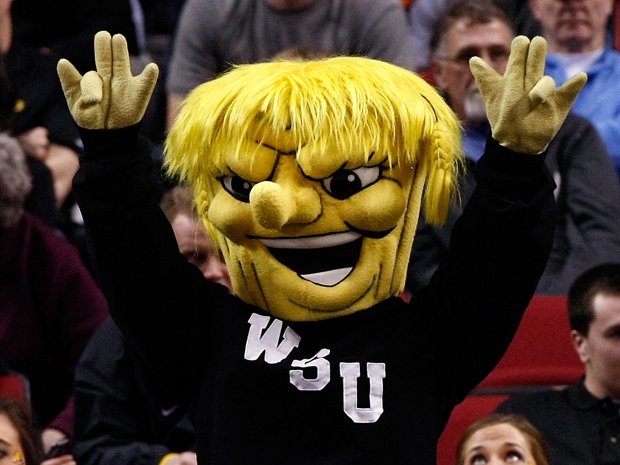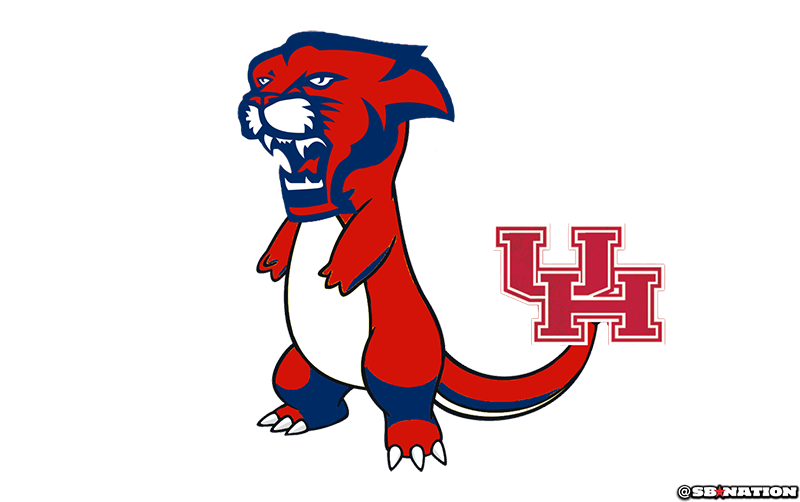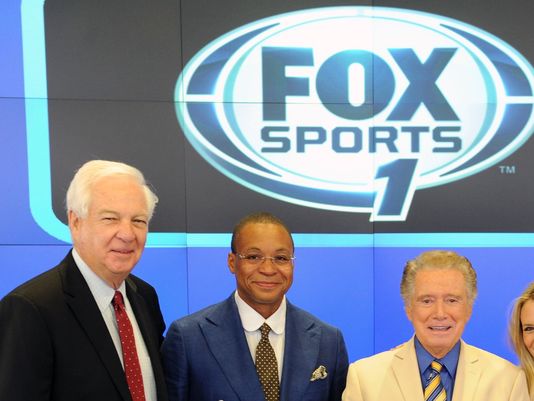 It has been a whirlwind for the past three weeks since the Big Ten announced that it was expanding with USC and UCLA. I have a lot of thoughts on what the Big Ten will (or more likely, won’t) do in terms of further expansion, the fight for the upper hand between the Pac-12 and Big 12, and how conference realignment may impact the playoff.
It has been a whirlwind for the past three weeks since the Big Ten announced that it was expanding with USC and UCLA. I have a lot of thoughts on what the Big Ten will (or more likely, won’t) do in terms of further expansion, the fight for the upper hand between the Pac-12 and Big 12, and how conference realignment may impact the playoff.
At the top of my mind, though, is the ACC Grant of Rights agreement (the “GOR”) and how that document is holding the league together. As a reminder, the GOR entails each school of a conference granting control of its media rights to that conference for the term of the agreement. The real potential mass hysteria from conference realignment is the prospect of partial ACC member Notre Dame and/or full members such as Florida State, Clemson and North Carolina bolting for the Big Ten and/or SEC.
Several years ago, I examined the Big 12 GOR agreement and concluded the following:
[T]he GOR’s strength isn’t that it’s an ironclad complex agreement that doesn’t include any loopholes. Instead, it’s an arrangement that is a triple-dog-dare to schools that want to attempt to challenge it since there isn’t any reliable precedent about how to calculate damages. This is proverbial Russian roulette in a practical legal context – the damages could be more than you could imagine… or they could be less than what a normal exit fee would have been. That makes it a great moot court exercise for people like me and other writers in the peanut gallery, but a dangerous contract to challenge in real life. Lawsuits that are brought on principles other than money, such as constitutional challenges filed by the liberal ACLU or conservative American Center for Law and Justice, can afford to tackle these types of ambiguous arrangements. However, conference realignment is almost entirely about money, which means that the great risk of trying to challenge the GOR (even if there are viable legal arguments against it in theory) is likely going to be enough to dissuade any school from leaving a conference that has that type of contract in place.
Essentially, the only realistic way out of a GOR is for a departing school to offer a conference a crap ton of money far beyond a standard exit fee and hope that the conference accepts that offer. Note that a conference doesn’t even have to accept such offer and can simply continue to own that school’s media rights until the end of the GOR term. This means that the notion of “breaking” a GOR is a misnomer because it implies that the departing school has any control over getting out of the agreement (even if it’s willing to pay a massive amount of money). Instead, it is the conference that has the power to waive or not waive the GOR obligations in its absolute discretion (whether reasonable or unreasonable).
After the story broke about USC and UCLA moving to the Big Ten, Andy Staples of The Athletic interviewed an attorney that obtained and reviewed copies of the Big 12, ACC and Pac-12 GOR agreements and essentially came to same conclusion that I did: the GOR terms are almost shockingly short and simple, which actually makes them tougher to challenge in practicality.
That article did bring up one possible nuclear option to terminate a GOR: dissolve the conference entirely. The basic premise is that if the conference dissolves and ceases to exist, then any GOR inherently can’t exist and the rights would revert back to the member schools. Over the years, the dissolution of a conference is an Internet message board favorite theoretical mechanism for a league and/or its schools to get out of all types of unfavorable contracts or other obligations: bad TV contracts, exit fee penalties and, as discussed here, any GOR terms.
Of course, it would stand to reason any conference would want to make it really difficult to be dissolved and, furthermore, would want to prevent any schools with a clear conflict of interest against the league from making any type of dissolution vote. The conference bylaws would dictate what would be necessary to approve and complete a dissolution.
While I haven’t been able to obtain a copy of the ACC bylaws, the Big 12 has their bylaws freely available at its public website. The Big 12 is a great instructive example because the league has a GOR agreement and, by the fact that their bylaws are publicly available, the ACC or any other league would be able to copy them or draft similar bylaws. In a review of the bylaws, it’s clear that the lawyers drafting them fully anticipated all of those future Internet message board arguments of schools trying to avoid penalties, exit fees and specifically the GOR by dissolving the league and actively wrote their bylaws to prevent that from happening.
For some context, these bylaws were approved by the current 10-team Big 12, so this was after the threat of the formation of the Pac-16 (where Texas, Texas A&M, Texas Tech, Oklahoma, Oklahoma State and Colorado would have joined the then-Pac-10) and the actual defections of Nebraska to the Big Ten, Colorado to the Pac-12, and Texas A&M and Missouri to the SEC. Not surprisingly, the conference members likely wanted to ensure that there couldn’t be any shenanigans from anyone (cough Texas cough) to leave the others high and dry via a dissolution or other votes where they would have significant conflicts of interest.
Let’s dive into what it would take to dissolve the Big 12. Note that each member has a seat on the Big 12 Board of Directors for voting matters. The Director appointed from each school is its Chief Executive Officer (e.g. president, chancellor, etc.). From Section 1.52(b) of the Big 12 bylaws:
The following actions may be taken only if approved by the affirmative vote of a Supermajority of Disinterested Directors (as defined below):
***
(2) The dissolution, liquidation, winding-up, merger, sale, or transfer of all or substantially all of the assets of the Conference…
Note that those that can vote on a dissolution aren’t all members of the Big 12, but rather a Supermajority of “Disinterested Directors” of the league. What does that mean? Here are the relevant definitions under Section 1.5.2.2:
(a) The term “Disinterested Director(s)” with respect to any issue shall mean each person who: (i) is then duly qualified and serving as a member of the Board of Directors pursuant to Sections 1.5.3 and 1.5.4 below; (ii) is the Director representative of a Member that has not Withdrawn and has not been precluded from voting on the matter in question as a Sanctioned Member; and (iii) is not an Interested Director (as defined below) with respect to such issue.
***
(c ) The term “Interested Director(s)” with respect to any issue means any Director who has personally, or as to which the Member that such Director represents has institutionally, a direct or indirect material interest in the subject matter of the issue (or series of related issues) being considered by the Board of Directors, that, in the judgment of a majority of the other Directors who are not Interested Directors with respect to such issue or series related issues, could reasonably be expected to impact adversely the objectivity of such Director in voting on such issue or issues. The interests that all Members have in common as the beneficial members of the Conference (even if such interests have disparate effects among Members) will not, in and of itself, cause the Director representing such Member to be an Interested Director with respect to an issue or issues impacting all Members as the beneficial members of the Conference. Any Director who has been determined to be an “Interested Director” in accordance with the foregoing may appeal such determination only in accordance with the following: (i) such Director shall submit a written appeal to the Commissioner and the highest ranking officer of the Board of Directors who has not been determined to be an Interested Director with respect to such issue, if any; (ii) the Commissioner and such highest ranking officer (if any) shall mutually determine and promptly notify such Interested Director with respect to their (or if there is no such officer, the Commissioner’s) determination on the matter, which determination shall set forth whether such Director is deemed to be an “Interested Director” on the matter in question; and (iii) the determination made by the Commissioner and any such highest ranking officer of the Board of Directors shall be final and binding on the Director(s) appealing the initial determination by the other Directors.
***
(f) The term “Supermajority of Disinterested Directors” with respect to any issue shall mean seventy five percent (75%) or more of all persons who are Disinterested Directors with respect to such issue, whether or not each is Present at a meeting considering such issue or signs a written consent with respect to such issue.
Essentially, (a) a Disinterested Director is someone that isn’t an Interested Director and (b) an Interested Director is someone that has been determined by the rest of the league to have a conflict of interest in the applicable matter.
Another key term is that a Disinterested Director must be from a school that has not “Withdrawn” from the conference… and this is where I give kudos to the lawyers that drafted these bylaws.
Here is how a member Withdraws or, more importantly for the purposes of this discussion, is deemed to have Withdrawn from the conference under Section 3.2 of the bylaws (emphasis added in the bolded text):
Withdrawing Member. A Member (a “Withdrawing Member”) may Withdraw, or shall be deemed to have Withdrawn, as a Member of the Conference: (i) if it gives notice of the intent to Withdraw to the Conference; or (ii) if a Supermajority of Disinterested Directors by affirmative vote determines that such Member: (A) makes statements or takes actions that are determined by a Supermajority of Disinterested Directors to evidence the intent of such Member to withdraw from the Conference either currently or in the future; (B) breaches or evidences its intent to breach or not honor and fully comply with its obligations to the Conference under these Bylaws or the Grant of Rights Agreement for the entirety of the respective terms thereof; (C) if a third party offers to, or attempts to induce a Member to, leave the Conference and/or breach or not to fully perform its future obligations under the Grant of Rights Agreement and the Member does not both (1) inform the Conference of such action as promptly as possible (but in any event not later than twelve (12) hours after such action) and (2) immediately and unconditionally reject that offer in a form and manner reasonably acceptable to the Commissioner; or (D) if a Member otherwise takes or fails to take actions that are determined by a Supermajority of Disinterested Directors to be contrary to the best interests of the Conference taken as a whole.
Subsection (i) is the clear situation where a school gives notice to the conference that it wants to Withdraw. That’s easy.
It’s subsection (ii) that really serves to protect schools from any clandestine attempts by other members to get around the GOR or take other drastic measures, such as dissolution. That clause effectively gives Disinterested Directors the ability to deem a school to have Withdrawn from the league (and thereby losing their voting rights) if (a) there are statements or actions that make it appear that school is attempting to leave the league, (b) a school breaches or intends to breach the bylaws or specifically the GOR or (c ) a school fails to provide the conference with notice within 12 hours of a third party offer or inducement for that school to leave the league or breach its GOR obligations.
Thus, it doesn’t matter if a school that is trying to leave the conference provides notice of withdrawal or not. As soon as the other members suspect that a school is taking to actions to get out of the GOR specifically (much less leave the league entirely), those other members can deem such school to have Withdrawn from the league and lose its voting rights in the process.
Now, in theory, some schools could conceivably get together a call for a dissolution vote before the other members can deem them to be Withdrawn. However, in practicality, if a school suddenly says, “We’re calling a vote for a dissolution of the conference today” out of nowhere, every other member is going to instantly know that the only reason that’s happening is that school wants to leave the conference and/or break the GOR. Those other members would then invoke the clause that allows them to deem that school to have Withdrawn from the league.
Plus, even if several schools are able to get a dissolution vote passed initially, the left behind members would instantly file a lawsuit and it would invariably come out in discovery that the departing schools were acting in contravention of the bylaws prior to that vote. That would mean that the left behind members would have a strong claim that the departing schools should have either been deemed to have Withdrawn from the conference or defined as Interested Parties that should never have been allowed to vote for dissolution. In turn, that dissolution vote would be deemed invalid and the left behind schools could continue the operations of the conference and enforce any obligations, including but not limited to GOR terms and exit penalties.
To be sure, I don’t know whether the ACC has similar language in its own bylaws. If someone out there has a copy, I would love to review it. However, if the ACC bylaws have terms that are anywhere close to the Big 12 bylaws, even attempting to dissolve the conference entirely wouldn’t get rid of the GOR because the dissolution of the league for the purpose of getting rid of the GOR would be prevented in the first place.
This goes back to a basic statement to anyone that believes that a school can “break the GOR” to leave for another league: There is NO magic legal silver bullet to break the GOR. The fact that Texas and Oklahoma still haven’t figured out how to extricate themselves from the Big 12 GOR just 2 years early (much less 14 years early in the case of any ACC school wanting to leave that league since that GOR runs until 2036) shows in real life how difficult it is to end any GOR obligations prior to their contractual termination date.
People need to stop looking at the GOR as a legal issue and start examining it as a financial issue. If a school wants to get out of its GOR obligations, then it’s going to be a purely financial decision of whether paying out a massive amount of damages to its current conference is worth it in relation to any increased rights revenue from a new conference. It could very well be the case that whatever GOR damages that a school leaving the ACC would need to pay would be more than compensated by the higher levels of rights fees in the Big Ten or SEC. However, no one should pretend that a school leaving a conference is going to “break the GOR” and get out with minimal or no damages. (Image from TV Guide)
Follow @frankthetank111









